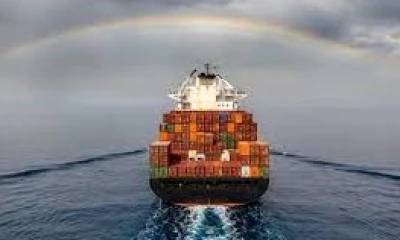Edited by Deepali Verma
Fitch Group said South Asian economies would be most affected with the continued rise in hostilities in the Red Sea owing to Houthi attacks. South Asia would be subject to experiencing the largest relative increase in maritime trade distance, shipping time, and costs as the crucial trade route remains inaccessible.
Additionally, Bharat’s economic forecast might face a significant risk in the event of a prolonged spell of disruptions.
“Provided the Red Sea disruptions continue to persist, the resulting downward revisions to our Bharat and Bangladesh forecasts will likely be important and would dent our 4.0 per cent growth forecast for Asia in 2024,” revealed BMI’s commentary, a unit of Fitch Group.
This is of due importance as Bharat and Bangladesh stand as two of the most vulnerable economies to Red Sea shipping disruptions in terms of gross domestic product growth this year, it said.
The Red Sea, a key maritime shipping route linking directly to the Suez Canal, substantially cuts the maritime trade distance between Europe and Asia and holds an important 12 per cent of the global trade.
The crisis has witnessed major movements in the container and ocean freight markets that sparked fears of inflation globally.
During the previous week, Bharat’s commerce department said that the attacks by Houthi rebels had resulted in a combined impact of higher freight costs, insurance premiums, and longer transit times. The impact is expected to increase the cost of imported goods significantly and make it more expensive.
The Department of Financial Services has been instructed to monitor that the exporters are given smooth credit to ensure the trade volatility is in check.
As per the Drewry World Container Index, container prices have recorded thrice the rate since the beginning of the maritime crisis to $3,777 for a 40-foot equivalent unit container as of January 18. The rates are calculated to register a rise of 23 per cent higher than last week.
Freight rates swelled by 35 per cent between China and the US in the span of a week, with similar surges seen across maritime routes.
“After the six-day blockage in 2021 along with the eight-year closure of the Suez Canal in 1967-1975 owing to the Six-Day War and the Yom Kippur War, there were disruptions to shipping through the Canal and the Red Sea can have a major impact on global trade. The blockage held up an estimated $9 billion in trade for each of the six days it lasted,” Fitch said.
It added that the rerouting of shipping to avoid the Red Sea will cause reduction in the global trade and fuel price pressures by increasing the shipping costs, thus weighing greatly on the economic activity.
The American non-profit agency National Bureau of Economic Research quoted a 2009 research on the eight-year Suez Canal closure in which Fitch said that every percentage point increase in trade because of the closure of the Canal resulted in a 0.5 percentage point reduction in global trade.
The closer the proximity of an economy to the Suez Canal, the greater the hit it takes due to rerouting. “Hence, South Asia would be the worst hit while Australasia is likely to weather relatively well,” Fitch said.

















